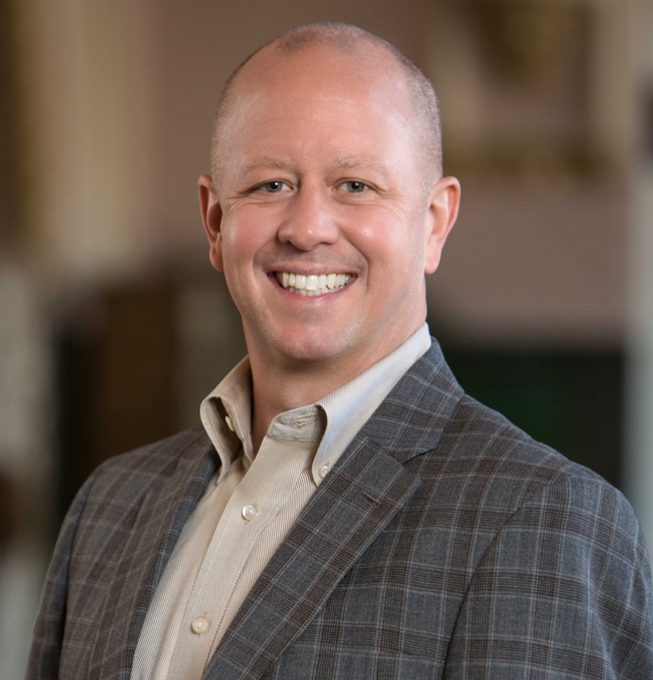July 29, 2021
Business Owners: 10 Strategies to Create, Manage and Distribute Wealth

Despite a lengthy global pandemic, supply chain delays, inflationary spikes in segments of the economy, and a very tight labor market, your business is highly successful. Yet maybe these challenges, or even other circumstances, have placed financial pressure on your business that you still need to successfully navigate. Whether your business is currently healthy or under a bit of strain, a key question still needs asking: How is your personal financial situation?
A healthy business does not automatically translate into you being on a positive track toward your long-term financial priorities and goals. Similarly, a business with challenges does not automatically translate into a troubled personal financial situation. Business owners who have a healthy financial life have been intentional about achieving that success. Those who are not yet financially successful, or who do not know how to become intentional in pursuit of financial health, can implement 10 strategies to begin that journey.
1. Pay yourself first. Saving income into a qualified retirement plan, starting at the youngest age possible, can reward business owners with the power of compounding growth over a lifetime. The longer recurring deposits can be invested into a diversified portfolio, particularly when savings are pre-tax and grow tax-deferred over decades, the greater the likelihood that this will be the most beneficial financial opportunity available for achieving the lifestyle you want in retirement. As a hedge against higher future tax rates, consider also saving into a Roth 401(k) or Roth IRA.
2. Always know where your money should go. Optimally, a maximum of 50% of gross income will go toward financial needs: loan payments and taxes. The next 30% of income can go toward wants, otherwise known as lifestyle spending, allowing 20% to be saved toward long-time financial priorities.
3. Always know where your money does go. A fiduciary financial planner, or even budgeting software, can identify how your income is currently spread across your financial needs, wants and savings. If savings are not 10% to 20% of gross income, it greatly reduces the probability of funding future financial priorities.
4. Properly align financial priorities: needs, wants and savings. Reconcile the gap between where your money is going relative to where it should be going. Determine, either with a fiduciary financial planner or independently, how to redirect personal cash flow into the right categories. Then refresh a Monte Carlo analysis to stress-test if the redirected spending is projected to sufficiently fund your future priorities. If not, work through the spending exercise until your projections show that you are on track to reach your goals.
5. Properly align loans with the debt payment ratio. This principle is contradictory to how most people think. Rather than paying down debt as quickly as possible or avoiding debt altogether, wealth can accumulate tax-efficiently at a faster rate through pairing an intentional debt repayment methodology with the funding of a qualified retirement plan or other tax-efficient vehicle. Keys to success include establishing or refinancing into loans with tax-deductible interest and/or very low fixed rates with longer terms. Proceeds from any reduction in required monthly loan payments should be entirely redirected into savings, rather than spent on lifestyle.
6. Design the best company retirement plan for your cash flow. Small business owners can utilize standard or even custom-designed company retirement plans to save very large sums annually on a pre-tax and tax-deferred basis. Through a defined contribution 401(k) profit sharing plan, and potentially even a defined benefit plan paired with it, retirement plans can provide the single largest tax and saving benefit for business owners.
7. Make peace with how much you can afford to spend. After years of subsistence-level living through school or during the start-up phase of your business, nobody wants to eat mac ‘n’ cheese indefinitely to be able to save aggressively. Yet, maybe one shouldn’t buy the most expensive home in the neighborhood or stretch on luxury vehicles until implementing a comprehensive plan that balances the wants of today with the need for long-term financial health.
8. Take a comprehensive approach to investing. Portfolios should be considered in aggregate and in the context of your need, ability and willingness to take investment risk. Picking stocks, or trying to anticipate which direction the stock market will go in the near-term, is a loser’s game. Assembling and rebalancing a globally diversified portfolio in pursuit of market-like returns follows the evidence of successful investing.
9. Manage risk through proper insurance coverage. Insurance transfers financial risk from an individual, or a business, to a larger pool of people and companies. Transferring risk protects against undesirable and unexpected events. Insurance is not an investment vehicle, and it is not a retirement plan structure. It is, however, critically important to be protected across many areas of risk at a proper level. Rely on a fee-only financial planner who does not sell insurance or have a commission-driven conflict of interest to help assess the areas and levels of coverage needed.
10. Establish an estate plan aligned with your objectives. A proper estate plan should include all documents that will empower successors upon one’s incapacitation or death, plus specify who and/or what will benefit from the transfer of possessions and assets after death. A critical step is to properly title all accounts and beneficiaries consistent with the priorities listed in these documents. Estate planning needs to be refreshed every five years, or more frequently if major events in life occur, to assess how changes in your circumstances and state or federal laws have impacted your plans. Many institutions will not accept documents that are older than five to seven years, further emphasizing the need to maintain your plan.
It is important to recognize that these strategies are not arbitrary but are instead designed to specifically support the pursuit of defined, personal financial goals. Rather than focusing only on your business operations, you should implement processes to comprehensively connect your business and your personal financial health. Your personal income starts with the bottom-line financial health of your business, yet, by applying these 10 strategies, your priorities for the future do not have to remain dependent solely on the present health of your business.
This commentary originally appeared July 14 on thestreet.com.
The opinions expressed by featured authors are their own and may not accurately reflect those of Buckingham Strategic Wealth®. This article is for general information only and is not intended to serve as specific financial, accounting or tax advice. Individuals should speak with qualified professionals based upon their individual circumstances. The analysis contained in this article may be based upon third-party information and may become outdated or otherwise superseded without notice. Third-party information is deemed to be reliable, but its accuracy and completeness cannot be guaranteed.
By clicking on any of the links above, you acknowledge that they are solely for your convenience, and do not necessarily imply any affiliations, sponsorships, endorsements or representations whatsoever by us regarding third-party websites. We are not responsible for the content, availability or privacy policies of these sites, and shall not be responsible or liable for any information, opinions, advice, products or services available on or through them. IRN-21-2305
© 2021 Buckingham Strategic Wealth®
Category
Business OwnershipContent Topics
About the Author

Rob Ziliak
Chief Solutions Officer
